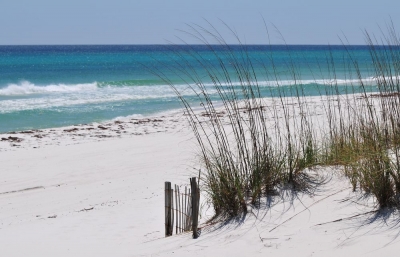
Sand is basically the small particles of eroded larger rocks. The erosion is caused by several factors, including water and wind. Depending on the geography, the composition and colours of the sand vary. For instance, beach sand could be lighter because of calcium carbonate desposits from shells and skeletons of marine creatures. Meanwhile, desert sand comprises fine, light-weight particles that have been brought in by wind. River sand is likely to be coarse, containing even bright-coloured stones.
On some beaches, sand grain size composition varies with distance from the water. A greater proportion of finer, smaller sand grains may be pushed higher up the beach by waves or by wind, whereas larger, coarser grains are deposited closer to the water. However, beaches are complex and highly variable environments, and there are many areas where this distribution is not found because there are many conditions that affect sand size and distribution. Additional factors influencing sand grain size include the nearshore and offshore seafloor features, substrate type, sand source, currents, wind exposure, and coastline shape.
Beach sand can appear fairly uniform, but it is actually a complex mixture of substances with various dimensions. When scientists study sand, some qualities are particularly useful in characterizing the type of sand. These qualities include the colors, texture, and size of the sand grains and their material origins. In general, sand observations can be divided into three broad categories:
observations about size,
observations about shape, and
observations about the probable source of the sand.
From these three characteristics scientists can learn about the physical, chemical, and biological processes at the beach from which the sand came.
The Wentworth scale is one system used to classify sediments, including sand, by grain size. The word sediment is a general term for mineral particles, for example individual sand grains, which have been created by the weathering of rocks and soil and transported by natural processes, like water and wind. In decreasing order of size, sediments include boulders, gravel, sand, and silt.
Credit : Manoa Hawaii
Picture Credit : Google




